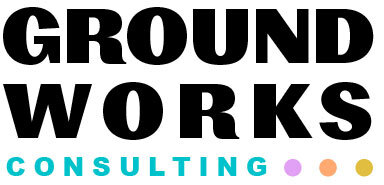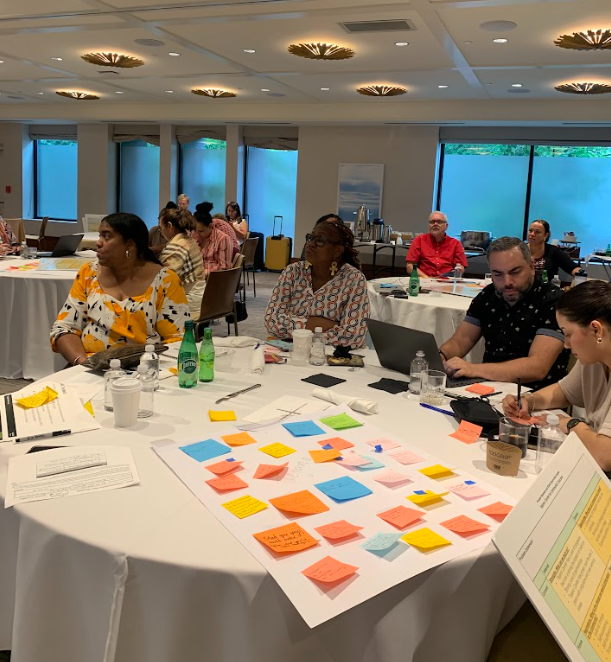5 Years In: What the Health Equity Action Lab Taught Us About Building Community Power in Uncertain Times
As Ground Works marks our fifth anniversary, we find ourselves reflecting on lessons learned through our work facilitating NeighborWorks America's Health Equity Action Lab (HEAL). In 2024, we had the privilege of working alongside nine community development corporations as they tackled some of the most pressing health equity challenges facing their neighborhoods. What emerged was a masterclass in community resilience and the power of shared learning.
These lessons feel especially urgent now. As the Administration moves swiftly to defund critical programs that feed and house low-income children, families, and elders, the organizations in our HEAL cohort have modeled what it looks like to pioneer sustainable, community-centered solutions that can weather political storms. Their work offers a roadmap for how we can continue advancing health equity even when federal support disappears.
The Power of Cross-Community Learning in Resource-Constrained Times
One of the most striking discoveries from the HEAL program was how organizations thousands of miles apart were grappling with remarkably similar challenges—and developing complementary solutions. In this era of constricted public resources, we simply can't afford the luxury of reinventing the wheel in isolation.
Take NewVue Communities (Fitchburg, MA), whose work demonstrates the untapped potential of expanding housing organizations' community engagement models. Their Stewards Leadership Development Training empowers residents to advocate for community interests, leveraging existing relationships of trust and their own lived experience to influence policies and decisions.
Many CDC staff we spoke with expressed admiration for NewVue's approach, recognizing that their own organizations had robust community outreach programs but hadn't made the leap to developing community leaders to take a seat at decision-making tables. This kind of cross-pollination of ideas—where a housing organization in New England inspires a health equity approach in Texas—exemplifies why peer learning networks are more essential than ever.
When federal funding streams dry up, the innovations happening in communities across the country become our most valuable currency. The HEAL cohort showed us that sharing both successes and failures isn't just generous—it's strategic survival.
Reclaiming Our Stories, Refusing Erasure
Throughout the HEAL program, we witnessed organizations grappling with a troubling trend: the systematic erasure of local histories that provide essential context for today's health and housing inequities. This isn't accidental—there's an active movement to sanitize our collective memory, making it harder to understand how we got here and what solutions might work.
Interfaith Community Housing of Delaware (ICHDE) (Wilmington, DE) offers a powerful counter-narrative to this erasure. Their work deliberately centers Wilmington’s proud history as a stop on the Underground Railroad. By connecting residents to this legacy of resistance and mutual care, ICHDE creates a foundation for community-building that draws strength from historical precedent.
This approach recognizes something crucial: when we erase history, we don't just lose context for understanding today's persistent inequalities—we also lose access to a deep well of community pride and proven strategies for change. The same neighborhoods that provided sanctuary for freedom seekers in the 1800s have within them the DNA for creating sanctuary from the threats of today.
As political forces work to whitewash textbooks and minimize discussions of structural racism, community development organizations are uniquely positioned to serve as keepers of local memory. The stories of redlining, urban renewal, and community resistance that shaped our neighborhoods aren't just historical artifacts—they're the foundation for understanding why certain zip codes still predict life expectancy and what CDCs can do to disrupt that relationship.
Building Beyond the Whims of Philanthropy
One of the most sobering lessons from the last year has been witnessing the hazards of over-reliance on philanthropic funding to address systemic inequities. We have all received stark reminders that philanthropy can—and will— shift funding priorities based on political calculations and personal preferences.
This reality makes the work of organizations like Tejano Center for Community Concerns (Houston, TX) all the more visionary. Rather than accepting that food insecurity is an inevitable fact of life in their community, they're developing comprehensive strategies that incorporate revenue-generation models alongside traditional service delivery. Their La Tiendita approach to equitable grocery access doesn't just feed hungry families today—it builds community wealth that can sustain the work tomorrow.
What excites us about Tejano's model is how it refuses to treat symptoms only while ignoring causes. By creating pathways for community economic development within their food justice work, they're building infrastructure that can outlast any single grant cycle or donor's shifting interests. They're growing resources from within the community rather than exclusively waiting for resources to trickle down from outside.
This shift toward community-controlled resources feels especially critical as we face an administration hostile to the very communities CDCs serve. When public programs are under attack and philanthropic funding becomes increasingly unpredictable, the organizations that will thrive are those that have built diverse, community-rooted revenue streams.
What This Means for Our Movement
As we celebrate Ground Works' fifth anniversary, the lessons from the Health Equity Action Lab couldn't be more relevant. These organizations haven't waited for perfect conditions or abundant resources. They've started where they are, with what they have, learning from each other and building on the wisdom embedded in their own communities' histories. They've demonstrated that sustainable change happens when we address immediate community needs without losing sight of long-term power-building goals.
Most importantly, they've proven that isolation is the enemy of innovation. In times when resources are scarce and political winds are hostile, connection becomes our greatest asset. The peer relationships built through HEAL can outlast any single program—they represent a network of practitioners committed to advancing health equity regardless of what's happening in Washington.
As we look toward Ground Works' next five years, we're more convinced than ever that the solutions we need already exist within our communities. Our job is to help them find each other, learn from each other, and build the collective power needed to implement them at scale.

